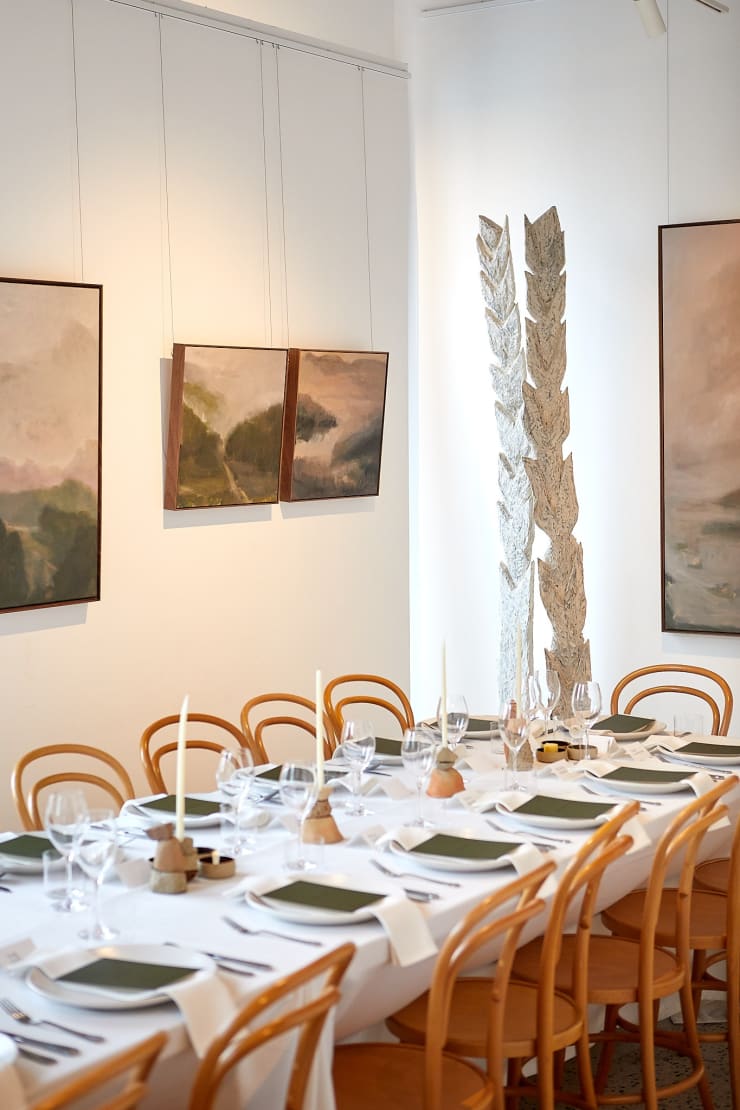-

-
In our age of sensory over-saturation, the art of Greg Wood represents a welcome abnormality. Wood is an artist who trades in the subtle nuances of landscape. The breaths and whispers of his palette are intentionally subdued to invite close inspection and, through a teasing sense of incompletion, to encourage us to fill the gaps and voids with our own memory and experience.‘Memory and experience’ are as much a part of Wood’s creative arsenal as oils and pigments, and he lathers them liberally onto his stretched linen. His art is guided by absence as much as it is presence, and he resists our twenty-first century need to have it all and to have it now. Indeed, there is something quintessentially eighteenth or early nineteenth century about his careworn pictures that gives them a sense of timelessness, but without compromising their breath-of-fresh-air contemporaneity. It is this ambiguous and wilful imprecision that thwarts our attempts to pinpoint time and place—qualities we have come to expect in an age of Google Maps and iPhotos—the loss of which leads to introspection and, if we feel so inclined, to melancholy. If Wood’s paintings strike us as imprecise it is because they intentionally straddle polarities to dwell in the liminal spaces in-between—a space all too unfamiliar to twenty-first century audiences. As Peter Davidson notes in his The Last of the Light, ‘For the majority of people, with the exception of a few evening walkers and workers, the graduations of the dusk are rarely experienced, and lives are lived in a stark contrast of dark and bright [artificial light]’.1 It is within these ‘graduations of dusk’ where the art of Greg Wood resides.
-
When it comes to Wood’s paintings, it’s all in the eye of the beholder. His works are tangible objects, to be sure, but it’s the intangibility they bring to our field of vision—a kind of eyepiece to oblivion—that arouses our senses. Like looking through a camera lens that will not focus, we turn this way and that as we gaze upon mountain peaks, valleys, heavy clouds and empty meadows, expecting it all to become suddenly clear. The language of landscape lays before us, but the text has been scrambled. Wood’s paintings need time—demand time—before they will reveal anything of themselves. But once their mysteries start to unravel their effect is revelatory—not unlike learning to read a new language. We awaken to new worlds, new times, and feel that we are breathing an altogether new air, when we disappear into these paintings.
-

-
It is a most seductive and somnolent space and once under its spell, one cannot easily be released. Who would want to be? While Wood mutes those senses we most rely upon—or so we think—he heightens those that have laid dormant. Like suddenly remembering that we are animals, with animalistic, wolf-like instincts, we become alert to the nuances in colour and tone, the calculated application of paintwork, and the shifting modulation of form. Are these actually landscapes? Not quite. James Gleeson referred to his surreal, large-scale works as ‘psycho-scapes’, and there is perhaps something in that, which might apply here also. Wood presents introverted landscapes that depict inner-worlds. Their peaks, gullies and mediating voids might be maps of the interior that chart that ‘memory and experience’ so unique to us all. Wood says little about his works, but what he does say is significant; he speaks of his hope that viewers ‘will draw on their own memories’ to complete each work, which then form ‘a journal of their own experience’.2 As such, we each of us see these paintings differently—there is no right or wrong interpretation. Why must we feel compelled to interpret anyway? Wood’s paintings, in their apparent dissolution, impel the release of the spirit and soul. The cues might be earthly in form, but their effect is anything but.
-
So, entering these paintings might, at first, be like wading into water against the tide. But as that tide turns and we are swept into their depths, unable to distinguish real from unreal, we follow the trail left for us by the artist. Each point of each canvas becomes a star within a greater constellation, and we travel in and through each picture, joining dots that become, when observed from a distance, as much a map of ourselves—collectively and individually. They demand an investment of time, but Wood’s paintings reward the patient, and those willing to let go and discover a new cosmos. Those ‘breaths and whispers’ of Wood’s palette become a clarion call to the unconscious that, once we are attuned to its frequency, brings into focus the long distant memories and experiences that have been with us all along.1 Peter Davidson, The Last of the Light: About Twilight, Reaktion Books Ltd, London, 2015, p.192 Greg Wood, in conversation with the author, 7 July 2023Written by Simon Gregg, Director of Gippsland Art GalleryPhotographed by Bernie Wright
-
Dinner with Greg Wood: in conversation with Simon Gregg, Director Gippsland Art Gallery
Past viewing_room




























